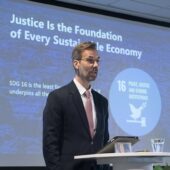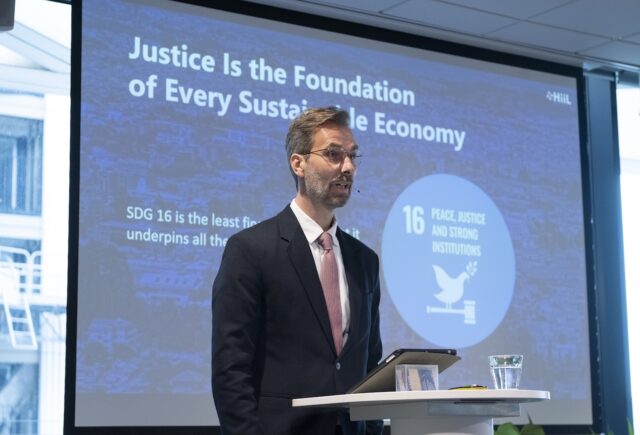This academic book focuses on SDG 17. The authors highlight the crucial role of local partnerships as part of the UN’s 2030 agenda.

In brief
- This book focuses on SDG 17 and the urgent need for “localization” which the authors believe is “the Achilles heel of the UN’s agenda 2030″
- There are multiple reasons why local projects work better – not all of them altruistic
- An academic approach would have benefitted from a more finance-oriented perspective
- There is a hidden gem – the discussion of ‘Securing Political Stability in Times of Rapid Societal Change’
There is a growing body of literature based on the United Nations Sustainable Development Goals (SDGs). This book comes from three academics – Christopher Ansell of the University of California, and Eva Sørensen and Jacob Torfing from Roskilde University in Denmark. The authors describe this as a time of “urgency and hope” with a lot of the hope coming from the SDGs themselves and their “Agenda 2030″.
They focus here on SDG 17, which urges that a global partnership for sustainable development. The authors tie this to what they say is an urgent need for “localization” which they believe is “the Achilles heel of agenda 2030 because “to be truly transformational this agenda must be institutionalized at all levels of society – it must go beyond government policies and programs.” It must be “localized”.
Why local action works?
“Think globally, act locally” is the main argument of this book. They cite a few examples, we perhaps could have done with more and certainly with more detail.
One is the role that local governments and universities played in mobilising volunteers to plant one million trees in Iraq. Another, the wide range of local actors involved in the promotion innovative urban planning in Milan, and EU’s European Union’s LEADER program “that aims to spur innovation and growth by mobilizing rural communities to stimulate tourism”. None of these is explored in depth.
Several arguments are made for why localisation works including that it “may enhance the status and street credit of politicians, public agencies, private businesses, NGOs, and individual citizens”. So much for altruism.
Otherwise, there are clear advantages in addressing “societal problems that are visible and directly felt by local communities… [whose] direct experiences place a premium on finding practical solutions.” And local governance tends to be more pragmatic “the immediacy of problems prompts actors to constructively manage their differences to find solutions that work in practice” and to overcome red tape.
The co-creation process
The word “actors” crops up a lot in this rather academic book, and in the four basic steps in the co-creation process outlined. “In the design phase, the actors explore the problems at hand, design solutions, and test prototypes. In the implementation phase, the actors must secure proper financing, coordinate action, and consolidate new solutions. The last step is the evaluation phase, where results and impacts are measured and scrutinized, and successful solutions are diffused.”
They suggest a crucial role for co-creation platforms “relatively permanent, yet flexible, infrastructures that provide knowledge, resources, and organizational templates” for all those actors. They can be created by local or central governments, but the local stakeholders must make sure “that it is tailored to the local context”.
The authors are most comfortable when discussing abstract process. The passage that is likely to be of most interest to impact investors is the one on ‘Funding and Finance.” The authors admit that, considering the enormous need for financing the SDGs and the limited capacity of the public sector, “the private sector must play a major role in financing SDG solutions and ultimately drive the transition to sustainability”.
However too many of their observations are couched in academic rather than business terms. I wish they had perhaps asked someone with more impact finance experience to co-author with them.
Their conclusion is that the solution is blended finance. They discuss the successful water storage and irrigation infrastructure in Sudan. “A new company – Al-Shamil – was formed in 2006 with 21% minority participation by the federal and state governments and 79% participation by private sector funds.”
Hidden gem
There is one hidden gem buried in the authors final chapters. In a section entitled ‘Securing Political Stability in Times of Rapid Societal Change’, there is reflection on the political challenge associated with the transition to a sustainable future. “The problem is that both global problems and efforts to solve them will tend to foster disruptive change and heightened turbulence…in some areas the transformation process itself may be a source of conflict and upheaval.”
They cite the example of the massive yellow vest protests in France sparked by President Macron’s attempts to reduce fuel consumption. The authors argue that local co-creation has a vital role to play here, in “deepening democracy” and involving people at a local level in the hard decisions, rather than handing them down to then.
This was perhaps the most interesting part of the book that needs a follow up.





